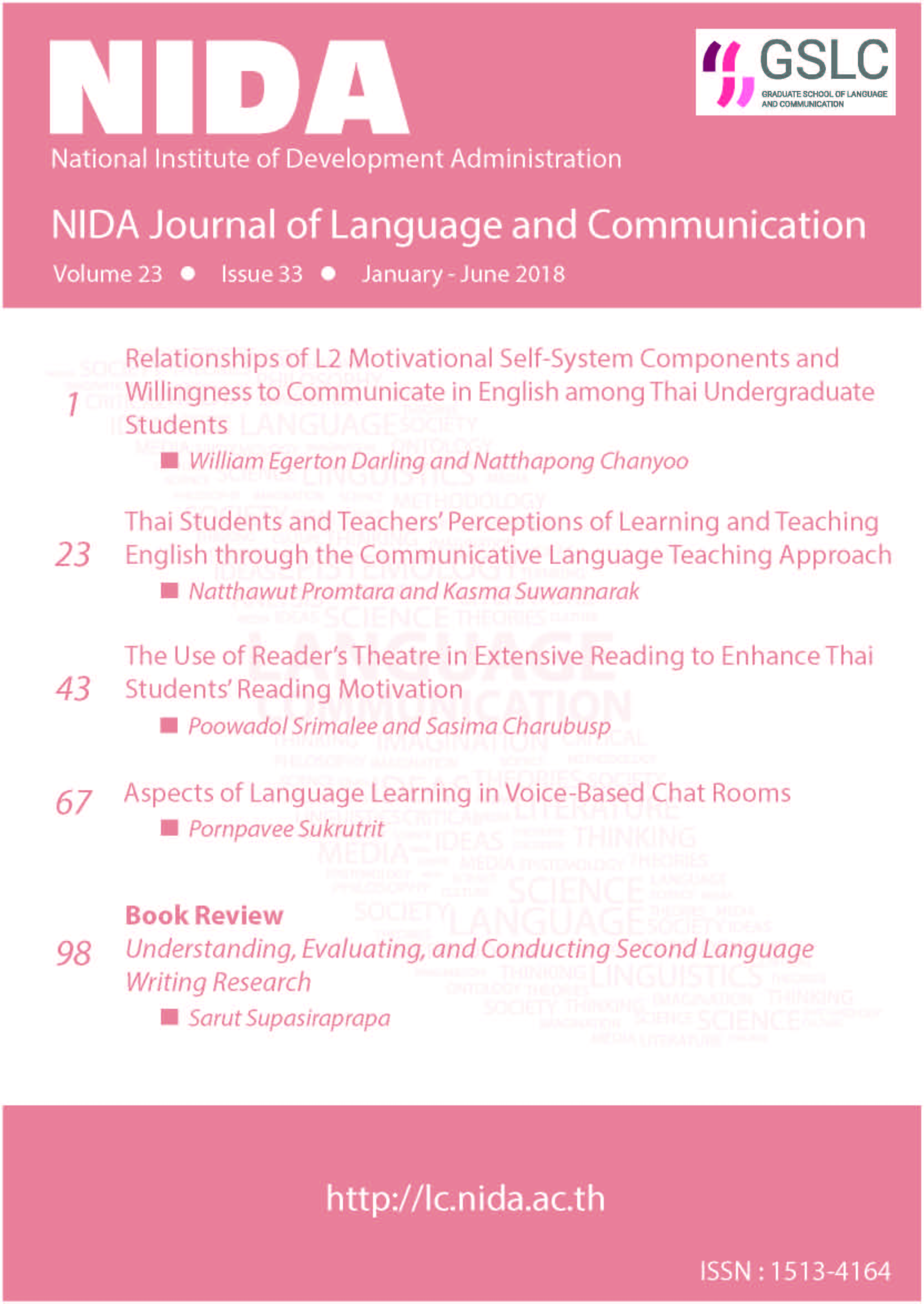Aspects of Language Learning in Voice-Based Chat Rooms
Keywords:
aspects of language learning, voice-based chat rooms, conversation analysisAbstract
In the past, learning a language was formally conducted in a classroom. At present, voice-based chat rooms can be an alternative option to practice language skills, including English. This study places an emphasis on studying aspects of language learning via talk in voice-based chat rooms. Participants are both native and non-native speakers of English from around the world chatting to each other about numerous topics. Applying Conversation Analysis (CA) to investigate aspects of language learning via talk-in-interaction in voice-based chat rooms are useful for language learners and language teachers interested in learning aspects of language used in a natural context outside the classroom. Since the participants have various backgrounds and identities, aspects of language learning are revealed in terms of a real context of language used in voice-based chat rooms which mostly relate to non-formal language, English accents, code-switching, communication strategies, interpreting pauses in a conversation, language etiquette and manners, politeness, and some forms of compliments.
Downloads
Published
How to Cite
Issue
Section
License
By submitting a manuscript, the author transfers the copyright for the article to School of Language and Communication, National Institute of Development Administration (NIDA), if and when the manuscript is accepted for publication. Though the journal is an open-access, reproduction of any material published in NIDA Journal of Language and Communication for non-personal and/or commercial purpose requires a written permission from School of Language and Communication, National Institute of Development Administration (NIDA).






